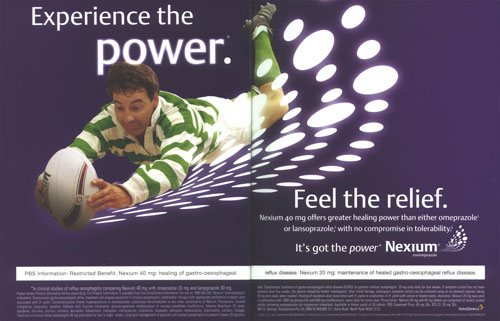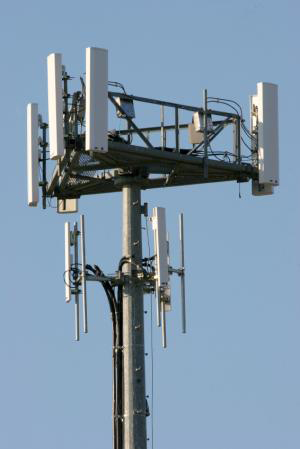Comcast May Be A Class Action Game-Changer, But Not In Boston
By admin on December 19, 2013
In Comcast Corp. v Behrend, 133 S.Ct. 1426 (March 27, 2013), the Supreme Court held that the lower court erred in failing to consider flaws in plaintiffs’ damages model merely because the damages model would be pertinent on merits issues…..thus, "running afoul of our precedents requiring precisely that inquiry". It was up to the district court to determine whether the expert’s methodology was "just and reasonable inference or speculative."
lower court erred in failing to consider flaws in plaintiffs’ damages model merely because the damages model would be pertinent on merits issues…..thus, "running afoul of our precedents requiring precisely that inquiry". It was up to the district court to determine whether the expert’s methodology was "just and reasonable inference or speculative."
Citing the Reference Manual on Scientific Evidence, the court held that the "first step in a damages study is the translation of the legal theory of the harmful event into an analysis of the economic impact of that event."
Pre-Comcast, plaintiffs generally focused on getting over the hump of standing and/or alleging damages under various legal theories at the pleading stage, without knowing how they would ever prove up damages. No more! The ground has shifted beneath the feet of the plaintiff class action bar. To cite the D.C. Circuit Court of Appeals, the new judicial mantra is "No damages model, no predominance, no class certification".
Despite Comcast’s holding, some federal trial courts continue to certify class actions of arguably questionable merit. An example of such a case is In re: Nexium (Esomeprazole) Antitrust Litigation which was handed down by the District of Massachusetts on November 14, 2013.
 Plaintiffs alleged that they paid higher prices for Nexium because less expensive generic versions of Nexium were prevented from coming onto the market due to AstraZeneca’s settlement with three generic manufacturers. The end-payors (as the plaintiffs called themselves) sought to certify a sprawling Rule 26(b)(3) class consisting of virtually every consumer (insured and uninsured), commercial insurer, health plan and pharmacy benefit manager who had paid any portion of the purchase price for Nexium for a six year period in twenty-six states.
Plaintiffs alleged that they paid higher prices for Nexium because less expensive generic versions of Nexium were prevented from coming onto the market due to AstraZeneca’s settlement with three generic manufacturers. The end-payors (as the plaintiffs called themselves) sought to certify a sprawling Rule 26(b)(3) class consisting of virtually every consumer (insured and uninsured), commercial insurer, health plan and pharmacy benefit manager who had paid any portion of the purchase price for Nexium for a six year period in twenty-six states.
Although the district court referenced the Supreme Court’s rulings in Wal-Mart and Comcast, it certified a class despite plaintiffs’ adoption of a model that adopted the use of “aggregate damages calculations.” The defendants properly objected to the damages model because it failed to account for differences in injuries and losses among class members.
The use of an "average" price differential, even if capable of being proven, ignored the variations within the class and did not identify which end-purchasers would have saved money and which would have lost money if and when generic Nexium had entered the market. Even the district court acknowledged that under plaintiffs’ model certain class members who suffered no damages whatsoever would remain in the class.
Applying the reasoning of the D.C. Circuit in In re: Rail Freight Fuel Surcharge Antitrust Litig., one of the most important circuit court decisions applying Comcast, class certification would most likely have been denied because common questions of fact cannot predominate where there exists no reliable means of proving classwide injury in fact.
Plaintiffs’ expert conceded that the proposed class included tens of thousands of consumers who would continue to purchase branded Nexium after generic entry due to preference or their physician’s recommendation. Such brand loyalists would potentially have faced higher Nexium prices had generic Nexium been available.
would continue to purchase branded Nexium after generic entry due to preference or their physician’s recommendation. Such brand loyalists would potentially have faced higher Nexium prices had generic Nexium been available.
Other consumers were not injured because their co-pays were the same for both generic and branded Nexium. Plaintiffs’ average price differential model ignored variations within the class and failed to distinguish between purchasers who would have lost money if and when generic Nexium would have entered the market and those who would not have lost money.
In an almost identical situation involving a similar set of facts and the same plaintiffs’ expert, Dr. Meredith Rosenthal, a Philadelphia district court denied class certification in Sheet Metal Workers Local 1141 Health and Welfare Plan v. GlaxoSmithKline, No. 04-5898, 2010 WL 385552, at #27 (E.D.Pa. Sep. 30, 2010), class certification was denied by the Pennsylvannia district court (pre-Comcast) which rejected an analogous damages model proposed by Dr. Rosenthal in a case of alleged generic drug suppression involving the drug Wellbutrin SR. There, as in the Nexium case, plaintiffs’ model failed to exclude uninjured class members. Because plaintiffs were unable to  meet their burden of Rule 26(b)(3) that questions of law or fact common to class members predominated over any questions affecting only individual members, the district court denied class certification.
meet their burden of Rule 26(b)(3) that questions of law or fact common to class members predominated over any questions affecting only individual members, the district court denied class certification.
It is difficult to understand how the Massachusetts district court determined that the Nexium end-payors’ damages model met the “rigorous analysis” standard required by Comcast and Wal-Mart, particularly as there are many thousands of plaintiffs in the class who have not suffered injury. Plaintiffs’ methodology indisputably failed to identify non-injured members of the class. We look forward to the First Circuit’s analysis of the Rule 23(b)(3) issues presented by the case, assuming that an appeal is in the offing.

 There is a significant risk that there will be a resurgence of mold claims and mold litigation in the wake of Hurricane Sandy. Sandy left behind thousands of homes and offices in New York and New Jersey with flood-soaked flooring and sheet rock and water-damaged carpeting and personal belongings, which are all potential sources of mold if not removed and replaced. In addition to potential mold exposure to property owners and lessees, there is the potential occupational risk to the thousands of workers in the construction trades who are working to repair damaged homes and offices.
There is a significant risk that there will be a resurgence of mold claims and mold litigation in the wake of Hurricane Sandy. Sandy left behind thousands of homes and offices in New York and New Jersey with flood-soaked flooring and sheet rock and water-damaged carpeting and personal belongings, which are all potential sources of mold if not removed and replaced. In addition to potential mold exposure to property owners and lessees, there is the potential occupational risk to the thousands of workers in the construction trades who are working to repair damaged homes and offices. in writing what responsibility, if any, the building contractor has for addressing mold conditions, particularly those conditions that may be adjacent to area of new construction.
in writing what responsibility, if any, the building contractor has for addressing mold conditions, particularly those conditions that may be adjacent to area of new construction.
 According to recent reports in the Greenwich Time, Greenwich, CT state legislators are proposing a bill that would prohibit building cell towers within 750 feet of a school or day care because of a perceived health risk from electromagnetic radiation. However, some Cos Cob, CT residents believe that the cell towers should not be permitted within 5,000 feet of any schools, day cares and elderly homes due to health concerns. Reportedly, the cell tower bill has been proposed by Rep. Fred Camillo, R-151st District, and supported by fellow Reps. Livvy Floren, R-149th District, Lile Gibbons, R-250th District, and Sen. L. Scott Frantz, R-136th District. There is no good evidence that attending school near a cell tower, such as the one proposed, creates a health risk. During the 1980’s, some plaintiff lawyers ballyhooed electromagnetic field (“EMF”) litigation as the “new asbestos.” A series of well-funded EMF trials were litigated against various electric utility companies around the United States in the 1990’s. After the presentation of the scientific evidence, judges and juries uniformly rejected plaintiff health claims. The Centers for Disease Control (“CDC”) website contains a great deal of reliable scientific information concerning health effects from radiation exposure from cell towers, cell phones, microwave ovens and hair dryers. According to
According to recent reports in the Greenwich Time, Greenwich, CT state legislators are proposing a bill that would prohibit building cell towers within 750 feet of a school or day care because of a perceived health risk from electromagnetic radiation. However, some Cos Cob, CT residents believe that the cell towers should not be permitted within 5,000 feet of any schools, day cares and elderly homes due to health concerns. Reportedly, the cell tower bill has been proposed by Rep. Fred Camillo, R-151st District, and supported by fellow Reps. Livvy Floren, R-149th District, Lile Gibbons, R-250th District, and Sen. L. Scott Frantz, R-136th District. There is no good evidence that attending school near a cell tower, such as the one proposed, creates a health risk. During the 1980’s, some plaintiff lawyers ballyhooed electromagnetic field (“EMF”) litigation as the “new asbestos.” A series of well-funded EMF trials were litigated against various electric utility companies around the United States in the 1990’s. After the presentation of the scientific evidence, judges and juries uniformly rejected plaintiff health claims. The Centers for Disease Control (“CDC”) website contains a great deal of reliable scientific information concerning health effects from radiation exposure from cell towers, cell phones, microwave ovens and hair dryers. According to